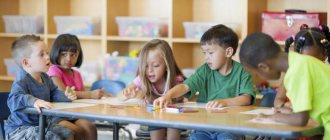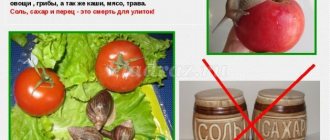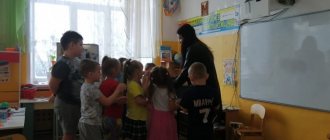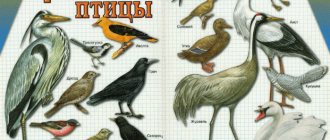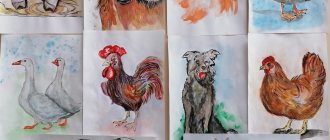GOALS:
Educational:
• Activation of the dictionary: verb forms, signs of objects, circumstances
• Literacy training: development of phonemic awareness and consolidation of letter knowledge; development of syllabic reading skills
• Coherent speech: development of creative storytelling skills, the ability to adhere to the chosen line in creative storytelling
• Grammar: constructing sentences such as judgments
• Sound culture of speech: teach children to pronounce words clearly and loudly
Educational:
• Formation of the skill of active monitoring and evaluation of performance results
• Formation of the skill of expressing one’s opinion
• Development of the ability for collective creativity
MATERIALS FOR THE CLASS
• Photo illustrations or pictures depicting a spaceship, starry sky, lunar landscapes, planets of the solar system, with views of the Earth from space
• Crossword puzzle tables (these can be on large sheets of paper or on a board)
• Cut-out pictures depicting various landscapes
1 The lesson notes have been compiled for children in the preparatory group. When using it for classes with older children, you can exclude the task of guessing a crossword puzzle.
PROGRESS OF THE CLASS
PART 1
Introduction to the topic of the lesson
Educator: Our lesson today is not entirely ordinary. So that you understand what we are going to talk about today, guess the key word of our lesson. We will guess it by letter and write it in these cells:
1 2 3 4 5 6
In the third cell we write down the letter that is hidden in the word “dream”. In the word “sleep” this letter comes first.
In the sixth cell we write down the letter that is hidden in the word “sedge”. In the word “sedge” the letter we need is in second place.
In the first cell we write down the letter that is hidden in the word “fairy tale”. In the word “window” this letter is in second place.
In the fifth cell we write down the letter that is in third place in the word “mole”.
In the fourth cell we write down the letter that comes last in the word “suit”.
In the second cell we write down the letter that is in fourth place in the word “salon”.
After completing this task, children read the keyword “space,” thus determining the topic of the lesson.
Note: each teacher can choose the words for this task independently. It is important that the vowels are stressed and the consonants sound clear so that children do not have doubts about their meaning. For example, to recognize the sound “b”, you should never give the word “hawk” (you hear not “b”, but “p”). It is better if there are vowels after the consonants.
PART 2
Work on the grammatical structure of speech Construction of common sentences such as judgments
Educator: I suggest you go on a space journey today. What will we take on our trip? Of course, on a spaceship. First, let's prepare for the flight, collect everything you need. But there should be nothing superfluous or random on the spaceship. Therefore, we will take only those things that line up in a logical chain, as if clinging to one another. We will choose them from the pictures that are laid out on this table. For example, I put the first picture of products on the flannelgraph. Do we need groceries on the flight? Of course, the flight will be long. To prevent food from spoiling, you need a refrigerator, so next I will put a picture with a refrigerator. Now you continue to select pictures.
Further, pictures can be selected in the following areas: to repair a refrigerator, tools are needed (picture with tools), the tools are stored in a special case (picture with a case), medical supplies can also be stored in the case (picture with a first aid kit); or in order to eat food, you need dishes (picture with dishes), the dishes are stored in the closet (picture with the closet), books can also be stored in the closet (picture with books, etc.)
PART 3
Vocabulary development Educator: We have collected everything necessary for the flight. Now stand in a circle, let’s put on special suits for astronauts - spacesuits. Imagine that you entered the ship, looked around... And what do you see? Try to talk about it with our game
"Magic wand". The stick, as always, goes in a circle. The one who took the stick says the word. Remember, it is important that the words in our circle are not repeated, otherwise the magic wand will stop and will not pass to another player. And you and I together must make sure that the words are not repeated. So, I saw a control panel in the spaceship, with which you can control everything that happens on the ship.
The teacher passes the stick to the next player, who says his word and passes the stick on. Children mark violations of the rules of the game by stomping their feet.
Children can name various devices, portholes, a kitchen, astronaut lounges, a library, a TV, a shower, armchairs, a spacesuit storage room, tools, computers, plants or experimental animals, pantries, etc.
When the stick goes all the way around, the teacher asks the next topic for conversation.
Educator: Now let's think about what we can do in a spaceship. We can observe the devices...
Children can list the following words and phrases: repair, troubleshoot, eat, sleep, read books, look out the window, take a shower, cook, control a ship, fly (because there is zero gravity in a spaceship), do physical exercise, etc. .
Educator: So, we found out that people can move inside a spaceship. How do they move?
Children list: slowly, quickly, smoothly, clumsily, accurately, rapidly, barely, like a turtle, etc.
1 The games “Magic Wand”, “Find Your Group” and “Cut Pictures” were developed by psychologist E.V. Ryleeva, author of the “Discover Yourself” program.
Educator: And now we come to the porthole and look through it at our planet. What does it look like from space? (Small; spherical; blue because you drink a lot of water; sparkling from the sun’s rays). What does our sun look like to us? (Very bright, blinding, shining...) How do you see stars in space? (They look like bright points, there are a lot of them, they are scattered throughout the sky, etc.)
PART 4
Development of phonemic hearing Isolation of sound in a word
Educator: We have gotten a little comfortable on our spaceship. You just told me that cosmonauts not only work, but also relax. And just imagine, they also love to play during their holidays. So you and I will play letter lotto.
All children are given cards and cards. The teacher (or child) has a bag with magnetic letters in his hands. He pulls letters out of the bag and says, for example: “Who has the letter M?” A child who has a picture on the card, the name of which begins with M, answers: “I have a bear” - and covers the indicated picture with the card. The teacher checks and prompts.
PART 5
Coherent speech Compiling a collective story from pictures Educator: And now we have flown up to the planet that we must explore. We took several pictures of the planet. But when the device printed our pictures, it turned out to be separate fragments. Here they are. (The teacher gives each child one fragment of the picture.) Your task is to create whole pictures from the fragments.
The game “Cut Pictures” is played. It can be organized in two ways.
1. The shirts in all the pictures are different colors. Children are divided into subgroups based on the color of their shirts. Each subgroup puts a picture on their table.
2. The shirts in all the pictures are the same color. The teacher only says that each picture is cut, for example, into 4 parts. Children themselves must determine into which subgroups they need to be divided. This game will be even more interesting and complex if you discuss the rule in advance: you cannot consult with each other, everything must be done silently, without uttering a word. Each of the children must determine which of the pictures his fragment fits, which subgroup he should join. Of course, this option for organizing the game is used only when the children are already familiar with the game.
After the pictures are compiled, the teacher gives the next task.
Educator: We must convey to Earth what we saw on this distant planet. But we are already so far from Earth that we cannot transmit the image. We can only communicate by voice. Therefore, we must tell everything that is shown in our pictures. Let's agree this: you make up a story based on your picture all together. Someone starts a story, then a second one continues it, then a third one, and a fourth one finishes it.
This task has a great educational effect in terms of developing social skills in children: they should be able to negotiate within their microgroup of 3-4 people and coordinate their opinions.
At the end of the lesson, if there is still time left, the teacher can offer the children an entertaining crossword puzzle “Solar System”.
1. A planet in the solar system, which in ancient times was called the “planet of war” for its red color.
2.The farthest from the Sun and the smallest planet in the Solar System.
3. Earth satellite.
4.The second planet from the Sun in the Solar System, a neighbor of the Earth.
5.What is the planet Saturn famous for? 6.The largest planet in the solar system.
Summary of GCD in the preparatory group with a presentation on the topic “Space”
Summary of direct educational activities on the topic “SOS” in space” (using information and communication technologies)
Author : Tushmakova Natalya Nikolaevna Topic : “Space” Goal : enrich children’s knowledge on the topic “Space”, consolidate skills and abilities in working with an interactive board . Tasks : Speech development:
- consolidate active vocabulary on the topic “Space”;
- develop dialogical speech (be able to express and prove your point of view); - consolidate the ability to select words - antonyms; - practice agreeing numerals with adjectives and nouns; - exercise the ability to solve puzzles; — continue to learn to answer in complete common sentences, develop coherent speech. Cognitive development:
- consolidate knowledge about the solar system, the sequence of arrangement of the planets of the solar system in their orbits, generalize and expand children’s knowledge about the characteristics of the planets;
— introduce the biography of the first cosmonaut Yuri Gagarin; — consolidate the ability to navigate on a plane, work according to a diagram; - practice counting backwards, adding and subtracting within 10; — practice the ability to work with an interactive whiteboard and use the toolbar. Social and communicative development:
- consolidate the ability to carry out independent joint activities in pairs, develop communicative qualities, friendliness; — improve teamwork skills.
Progress:
1. Surprise moment - Guys, today I received a strange letter by email, let's read it (children read the message on the laptop monitor): “SOS! Earthlings, help! We are your friends, but we live on the planet Mars. We have a problem, our planet is filled with garbage. Help us!" - Well, guys, let's help our friends from Mars? (Yes!) - I’ll take a carriage, harness a couple of horses into it, and we’ll rush off. Do you think we'll get there? (No). Why? “Then I suggest we go in the fastest car.” Do you think we'll get there? Why? - So what will we go on? (on a rocket). Why exactly a rocket? (children's answers). —Who controls the rocket? (astronauts). -What should astronauts be like? (Strong, dexterous, decisive, skillful, disciplined). —Are you ready to become such astronauts? (Yes). 2. Game “On the contrary” (with a ball in a circle). Let's check readiness for flight: take off - and vice versa... (land), bright - dim, dark - light, fly - fly, far - close, high - low, long - short, up - down, light - heavy, hot - cold, cowardly - brave, on - off, slow - fast, giant - dwarf. - Well done guys, everyone is ready for the flight! 3. Orientation according to the plan - We are at the cosmodrome. What kind of place is it? (this is the place from where space rockets are launched). A space rocket is waiting for us. Let's use the diagram to find a spaceship that is ready to fly into space (each child has a paper assignment, children work independently at tables).
- Whoever finds our ship first will color the desired road red using a stylus, and the rest of the children will color the path on paper with felt-tip pens. — Why did you choose this particular ship? Explain. 4. “Find a seat” - Seats in the spaceship are indicated by numbers. Each of you must take a card with an example (2 levels of difficulty) and find your seat with the correct answer (coordination of the numeral with the noun). Sample answers from children: “Add 4 stars to two stars, you get 6 stars. My place is number 6). - Well done, you all completed the task and found your seats. — Cosmonauts, in order for a rocket to take off, you need to count from 10 to 0. (10, 9, 8, 7, 6, 5, 4, 3, 2, 1, launch! Audio recording “Rocket Launch”) — We took off! - Here we are in space! Guys, look out the window, how beautiful our Earth is!
5. Physical exercise. — Now we will test your endurance and vestibular apparatus, that is, the ability to maintain balance, and this is very important for an astronaut. So, you must spread your arms to the sides, raise one leg, bend it at the knee and stand there while the music plays. Get ready, let's start! (children complete the task) 6. “Map of the solar system” - To find the planet to which we are flying, we need a map of the solar system. But something is wrong with her. What do you see on it? (stars, orbits, several planets). — What is an orbit? (the path along which the planets revolve around the sun) - Why do the planets, rotating around the sun, not collide with each other? (the planets rotate in their orbits) - What is missing from the orbits? (the sun and several planets are missing) - Which planets are missing? (missing planets Mercury, Mars, Jupiter, Saturn). — All planets of the solar system rotate strictly in their orbit. Among the planets there are large and small. Some of them are closer to the Sun, others are further from it. Our task is to correctly place the missing celestial bodies in their places on the map of the solar system. Game "Explainers". Each child takes turns taking a card with an image of a celestial body and names its distinctive feature; the children must guess the mystery. If the child finds it difficult, the teacher offers him a hint card with a schematic representation of the distinctive feature of the hidden celestial body. - So, we begin the task. You find the guessed celestial body and place it on the map of the solar system. Sample answers from children: - a huge hot star (Sun); - the smallest planet, it is closer than other planets to the Sun (Mercury); - the red planet, it has a large amount of iron and is covered with red sand (Mars); - the largest planet, it has no solid surface, it consists of poisonous gases, it is called a “gas giant” (Jupiter); - a planet with rings that consist of ice blocks and rocks (Saturn); Let's check our map with the help of an assistant poem: There lived an astrologer on the Moon, He kept records of the planets. Mercury - one, Venus - two, three - Earth, Four - Mars. Five - Jupiter, Six - Saturn, Seven - Uranus, Eight - Neptune. 7. - Well done, you have restored the map of the solar system and now we know where to go! While we are flying to her, Arinaa will tell us a prepared report about the first cosmonaut Yuri Alekseevich Gagarin (using slides). Text of the report: Exactly 55 years ago a very important event took place - the first manned flight into space. It was accomplished by Yuri Alekseevich Gagarin on the Vostok spacecraft. He was a brave and courageous man. (slide No. 1). Gagarin had many interests. He loved music, sports, a good joke, fishing, hunting, and loved photography (slides No. 2, 3, 4). Yuri had a family - a wife and two daughters: Lena and Galya (slide No. 5). There was a strict selection process for the first flight into space. Out of 3,000 people, 6 pilots passed the selection (slide No. 6). They were strictly checked by doctors, parachute training classes were conducted, and training was performed on various simulators. (slide number 7). Then the pilots passed the cosmonaut exams, Gagarin received an “Excellent” rating (slide No. 8). Before the start, Gagarin said the famous word “Let's go!” (slide number 9). Yuri Gagarin's flight lasted 108 minutes, his ship completed one revolution around the Earth. The tasks that Gagarin was given were the simplest: he tried to eat and drink in space, made several notes in pencil (slide No. 10). After landing, Gagarin said that, having flown around the Earth, he saw how beautiful our planet is. And, turning to people, he asked to preserve this beauty and not destroy it (slide No. 11). Gagarin was respected and joyfully received in many countries (slide No. 12). For his feat, he was awarded many awards in different countries (slide No. 13). The flight of Yuri Gagarin opened the way to the stars for people all over the Earth (slide No. 14). — Guys, what do you remember most from the report? — Astronauts, I see the planet Mars, we will land. 8. Game “Dienesh Blocks”. - Guys, look how much garbage there is! It’s good that planet Earth is protected by the atmosphere; even if debris flies towards us, it burns up in the atmosphere. — We leave the spaceship. We need to help the locals remove the garbage (there are Dienesh blocks on the carpet and 3 containers nearby). — To make it easier to recycle the garbage, it needs to be sorted into 3 containers. Each container has property designations that we should focus on. — In order to make it easier for us to work, we need to divide into 3 subgroups. Each subgroup fills its container in accordance with the designated properties. Agree among yourself, discuss your decision. After laying out the figures, the teacher asks which figures were placed in the first container, the second and the third. Children name their properties. We receive a message on the on-board computer (tablet): - Thank you, guys, you saved our planet. You are real friends! - Guys, it’s not for nothing that they say: “Friends are known in trouble.” - Well, it’s time for us to return to our planet. But what is this! The entrance to the spaceship was blocked. We need to choose a code word, for this we will guess a rebus (everyone is offered an envelope with a rebus). You can choose the option with an asterisk - it is more difficult, or you can choose the easier option. Whoever completes the task writes the guessed word on their card with a rebus and returns to the ship. - Let's check - remove the envelope from the screen (the word “Let's go”). 9. Physical exercise. – In order for our rocket to take off, we need to start it: Start the engines (rotate the arms in front of the chest) Connect the contacts (connect the fingertips) Prepare to launch the rocket (sit down) Start! (jump up). Take your seats, fasten your seat belts. (space music sounds). 10. “Letter to the Martians” - Guys, did you enjoy your trip to the planet Mars? Let's write a letter to the Martians and invite them to visit us. But in a letter you need to describe our planet so beautifully that they will definitely want to fly here. — Here are cards with various images characterizing planet Earth. In order to describe our planet in as much detail as possible, you need to draw up a story plan. Talk, agree on what exactly you will talk about, select the right cards, arrange them in the right order so that your story is coherent. To help, I will give you a world map. - Choose a storyteller, but if he forgets something, you can help him. Sample children's story: * Planet Earth is a huge ball. So big that it takes many, many months to travel around it. * There are 4 oceans on Earth: Pacific, Atlantic, Indian and Arctic. There are still many seas, rivers, lakes. * There are 6 continents on our planet: North America, South America, Australia, Antarctica, Africa, Eurasia. * The largest continent on our planet is Eurasia. On this continent is the largest country - Russia, in which we live. * On our planet there is water, air, plants, animals, people. * People create nature reserves for rare animals and plants and list them in the Red Book. * People of different continents and countries differ from each other in appearance: in the color of their skin, hair and eyes, in the shape of their hair (straight, wavy or curly), head, nose, lips, etc. * We love our planet very much and We try to preserve its beauty. - Well done, guys, you have a very good story, the Martians will definitely want to visit our planet. - Attention, astronauts, we are approaching planet Earth! Take your seats, fasten your seat belts! - Here we are at home, how beautiful it is on our planet. Unfasten your seat belts. 11. Gymnastics for the eyes. - Our eyes are very tired, let's do gymnastics for the eyes (one of the children does gymnastics according to the scheme, the rest repeat after him).
- Our journey has come to an end.
I want to give all the astronauts who have been in space the album “Space Journey” with stickers, in memory of our unusual adventure. Presentation for the synopsis of the GCD on the topic “SOS” in space"
We recommend watching:
Integrated lesson in the preparatory group “Travel to the Islands” Notes of educational activities for children of the preparatory group with a presentation on the topic: Rainbow Notes of a lesson on speech development in the preparatory group with a presentation. Retelling of the story by Sukhoml Lesson for older preschoolers on the world around them on the topic “Pets” with presentation
Similar articles:
Summary of GCD in the preparatory group on the topic: “Surprises of Autumn”
Summary of GCD in the preparatory group. In the land of kindness
Summary of GCD in the preparatory group “Journey through the autumn forest”
Summary of GCD in the preparatory group “Journey into Nature”
Abstract of GCD on ecology in the preparatory school group

